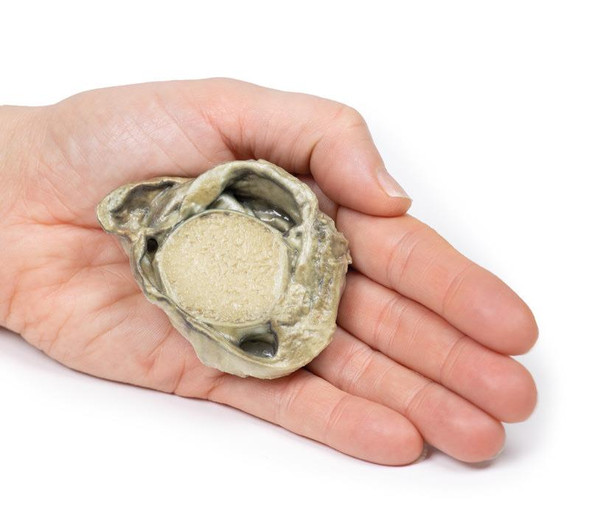Description
At the splenic hilum, the splenic artery and vein can be seen entering the spleen to supply and drain the organ. The opening of the splenic vein has been kept patent by the insertion of silicon tubing in the model. This model shows the most superior branch of the splenic vein has been sectioned from its normal passage into the spleen. The tortuous of twisted shape of the splenic artery can be appreciated as it branches at the hilum. This reflects the overall curled and twisted shape of the vessel across its course from the coeliac trunk to the spleen.
The splenic artery and vein give rise to short gastric vasculature as well as the left gastro-omental vasculature. In this specimen, the splenic artery and vein have been cut after these vessels have branched, and thus they cannot be seen in the model.
The splenorenal ligament connects the spleen to the left kidney and contains the splenic artery, splenic vein and tail of the pancreas. It is formed by the overlaying of peritoneum that was originally part of the dorsal mesentery during embryological development over this vasculature. The splenorenal ligament is not observable on the model as the peritoneum has been removed in order to expose the splenic vasculature.
The gastrosplenic ligament connects the stomach to the spleen and contain the short gastric arteries and part of the left gastro-omental artery at its origin as it branches off the splenic artery. Like the splenorenal, the gastrosplenic ligament is formed by the overlaying of peritoneum that was originally part of the dorsal mesentery during embryological development. The gastrosplenic ligament is not present as the splenic artery has been dissected after its formation.
The outside of the spleen consists of a thin fibrous capsule. Due to its delicate nature and the large quantity of blood usually contained in the spleen, the fibrous capsule is vulnerable to rupture.
Advantages
- Anatomically accurate and identical to real specimen
- No ethical issues - not real human body parts
- Reasonably priced
- Available within a short lead time
- Reproducible, several identical prints can be used as a classroom set
- Can be produced in different sizes to cater for the needs of the teacher
Human Cadavers
- Access to cadavers can be problematic. Many countries cannot access cadavers for cultural and religious reasons
- Cadavers cost a lot money
- High cost for establishing your own plastination suite
- Wet specimens cannot be used in uncertified labs
- Dissection of cadavers is a lot of staff time and that is a cost
- Storage of cadaver material needs special refrigeration etc. which has coast
- If you want another specimen you have to start all over again
Plastinates
- Costs
- Ethical issues
- Timeframe for plastination process
- Many countries do not allow their importation
- One of a kind
Superior 3D print results compared with conventional methods
- Vibrant color offering with 10 million colors
- UV-curable inkjet printing
- High quality 3D printing that can create products that are delicate, extremely precise and incredibly realistic
Clear Support Material
- To avoid breakage of fragile, thin, and delicate arteries, veins or vessels, a clear support material is printed on such spots. This makes the models robust and can be handled by students easily.



















